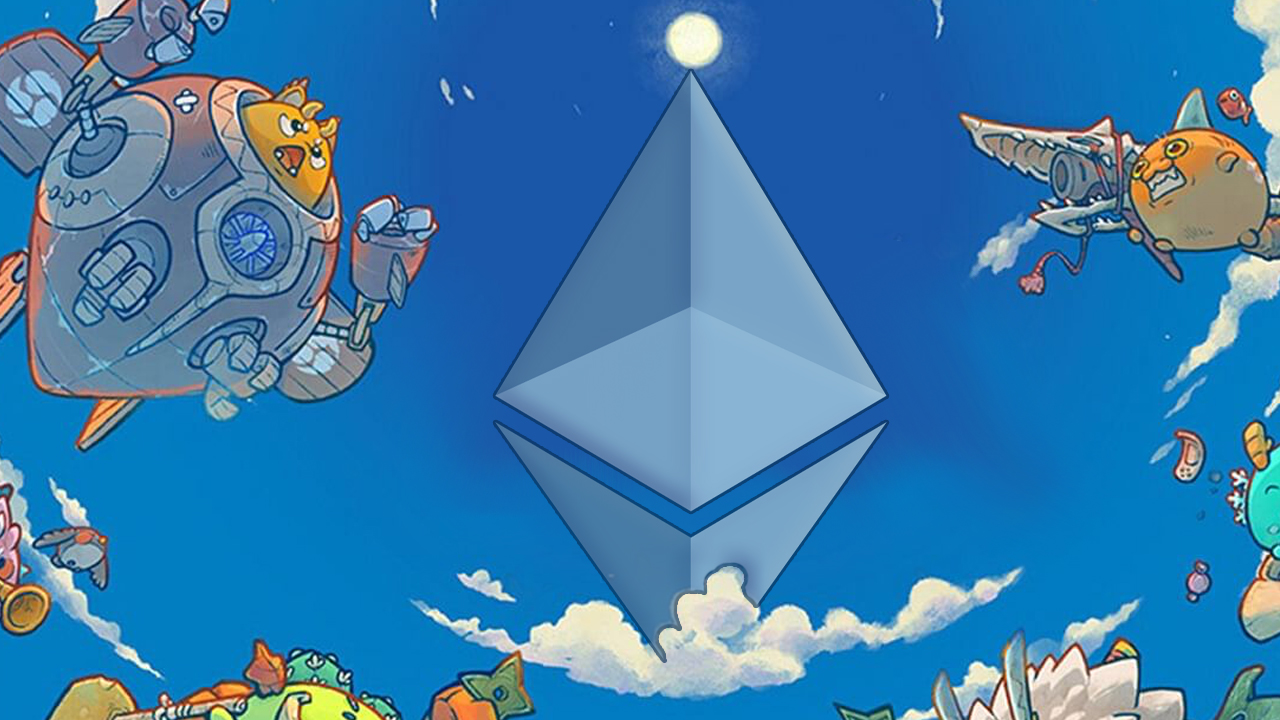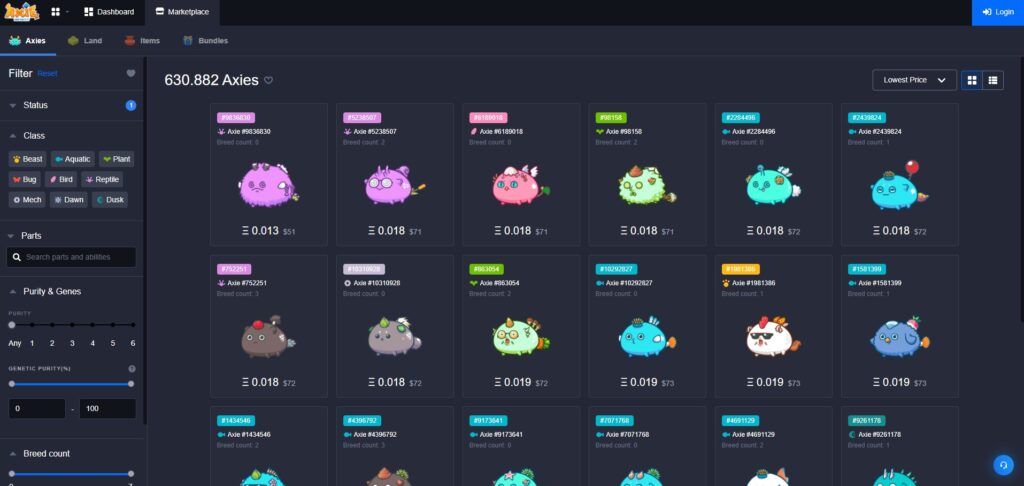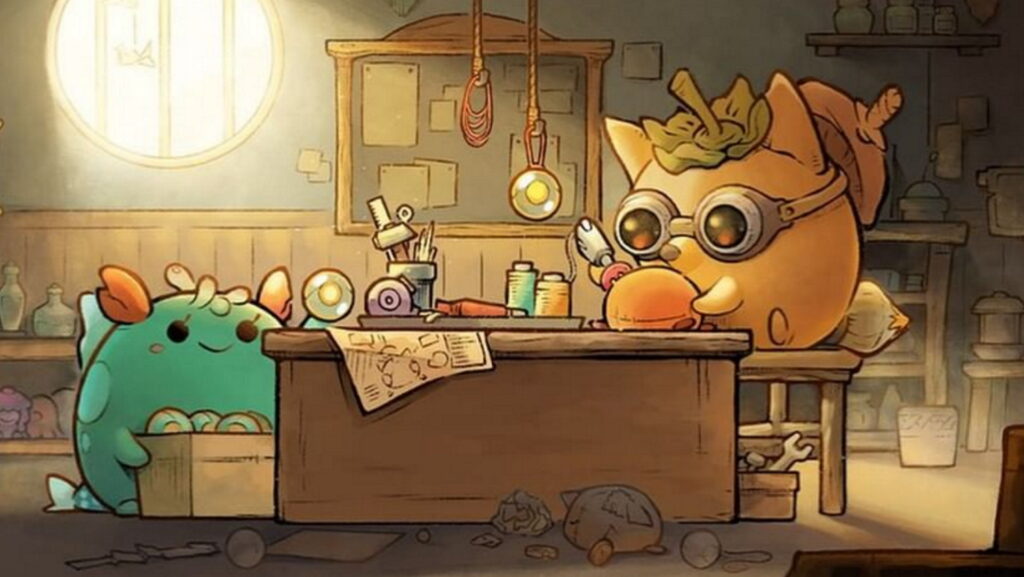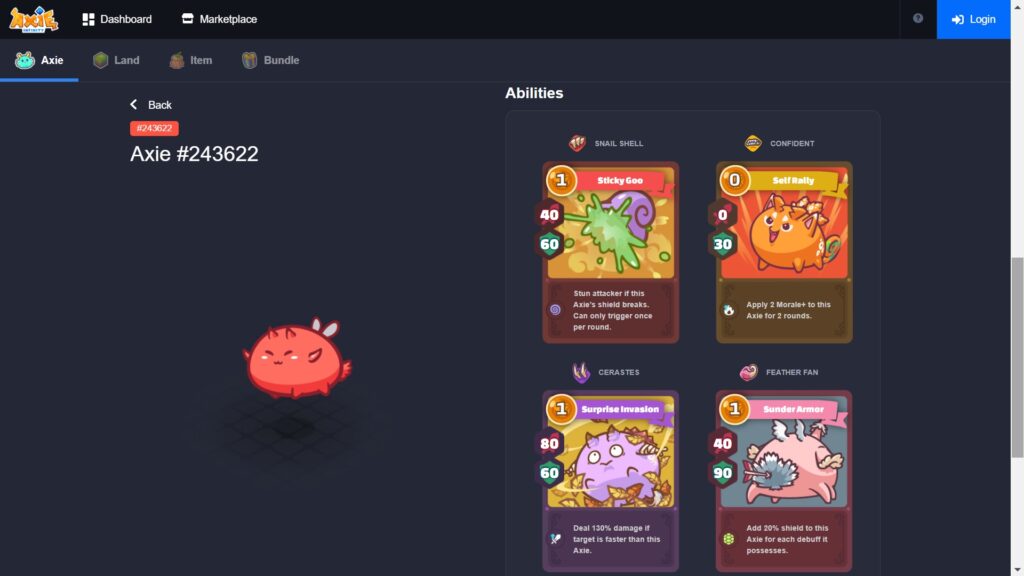
Axie infinity game is a collectable battler based on NFTs created by Sky Mavis, a Vietnamese firm that is a product of Ubisoft’s Enterprise Labs. A marketplace and Steam-like crypto game launcher, as well as a crypto wallet software, are among the dapps (decentralised apps) created by the developer.
Why is this important?
Axie infinity game has been a popular subject in recent months as a result of its rapid expansion, which has seen it reach 1 million DAU and $1 billion in lifetime transactions. This expansion is based on what axie infinity game refers to as “Play-to-Earn” (P2E): the option for players to pay out their in-game wins in order to support themselves in the real world. In the Philippines, this has been advocated as a viable alternative to COVID-affected occupations.
Many have cautioned, however, that the capacity of axie infinity’s economy to maintain P2E is dependent on the continual flood of new players eager to profit. As a result of the lack of new users, demand for new Axies (important characters) falls, and their price (and hence P2E profits) falls as well. Some have compared the situation to a Ponzi scheme because of this.

There are numerous fundamental concerns concerning axie infinity game that this essay will address as an entirely new sort of relationship between creators and players:
1. What is the gameplay like?
2. What is the economic system? How does Sky Mavis make money, for example?
Gameplay Fundamentals
Despite all of the buzz around axie infinity game, the basic gameplay receives relatively little attention. At its most basic level, the game is a cross between a team battler and a trading card game, with evident inspirations from Hearthstone and the Final Fantasy Tactics titles, as highlighted in Sky Mavis’ white paper.
The player assembles a squad of three axies, which are floating monsters that are carefully placed in a grid. The default target as well as the interaction between the axes are affected by this location.
Each axie is characterized by four attributes that influence battle performance (Health, Morale, Skill, and Speed). Second, each axie has four cards that might be thought of as abilities. Six bodily sections determine both stats and cards related to the axie (eyes, ears, horn, mouth, back and tail). Finally, there’s a series of lessons called rock, paper, scissors, which pits strong and weak students against one other.
Players are handed a hand of cards across their axis in battle, each of which costs a certain amount of mana to play. These cards specify how each axie will fight, defend, and assist each other, including targeting, boosting, and debuffing. The RPG and TCG mechanics coexist in such a way that team composition and positional tactics, as well as notions like card advantage and tempo, are sympathetically integrated. This results in a game with a subtle depth of strategy despite being simple to pick up and play at first.

In truth, the game’s ease of play and complexity of mechanics, along with very precise balance, make it quite enjoyable to play. Some seemingly basic processes require time to properly comprehend and perfect strategically.
Once you’ve assembled your team, you may play in one of two ways:
- Adventure: A collection of small PvE campaigns with saga map-style level connections. Players compete against non-axie adversaries controlled by AI.
- Arena: An Elo-ranked and match-made PvP game in which players pit their teams against one other.
The game’s economy is built on these two modes. Energy is utilized to reward the gate, and it refills over time depending on how many axes the player has, while victory awards SLP (Smooth Love Potion), the breeding token (more on these resources below). Axis are also rewarded with EXP in Adventure mode, which raises their level and improves their stats.
Despite its quality, though, the basic gameplay is overshadowed by the rest of the game since it is the least original or intriguing aspect of the product. Rather, it is the breeding economy and the marketplace that produce the profiteering behavior that makes axie infinity game one of the most interesting games in a decade.
What is the economic system like?
Three resources, in addition to the axes themselves, lie at the heart of axie infinity game. They are as follows:
• Off-chain Energy: Each PvP and PvE match consumes one unit of Energy. If a player runs out of energy, they may still play PvE and PvP, but they will not get SLP or EXP (Experience Points, which are used to determine the level of an axie). This implies that Energy is a reward gating system. The number of axes a player owns determines how much energy they may have and how fast it regenerates. This is a pretty random method of incentivizing players to buy more axes than the game needs.
• Smooth Love Potion (off and on chain): A grindable resource that is awarded after winning PvP or PvE battles. It is also one of the two resources needed to breed new axes, alongside AXS.
• AXS aka $AXS (on chain): The game’s ERC-20 governance token. This smart contract-backed token has a variety of applications, ranging from voting on development choices to staking, but the most important is its usage in breeding with SLP.
The essential resource at the heart of axie infinity game and the driver of P2E is SLP Grinding and P2E Smooth Love Potion.

SLP may be earned in two ways:
- Arena (PvP): Almost every victory awards a sum according on the player’s current rating, with higher ranks awarding more SLP every victory. There are no rewards for lower ranks.
- Adventure (PvE): Players are rewarded for completing a level based on their star rating (directly related to the number of axies still alive).
Energy is the gating element in SLP generation since SLP can only be obtained if the player possesses it. Increased axie ownership does, however, improve the pace of energy generation.
Players may claim their SLP from the game into their Ronin wallets at certain periods (currently every two weeks) (i.e. putting it on chain). SLP may then be exchanged on a cryptocurrency platform like Binance or used to produce axies.
This SLP selling has spawned a gig economy of gamers that grind the game, earn SLP, and then sell it for money. With three hours of play every day, gamers may expect to earn roughly 500 SLP per week. This works out to $32 per week and $1,664 per year at the current SLP price of $0.064 USD. Many players will be competing on a scholarship (an axie loaning group) and cashing out roughly 70% of their entire earnings ($1,164).
Running three axie infinity game accounts might now give a fair living in the Philippines, where the average wage is roughly $3,200 USD. However, there seems to be a recent dramatic downward trend in SLP prices, suggesting that P2E may soon become unsustainable.
